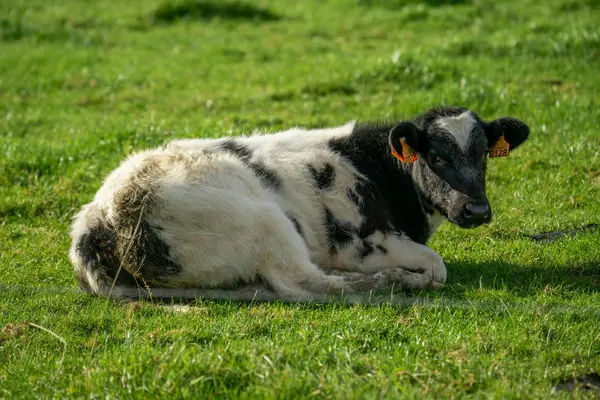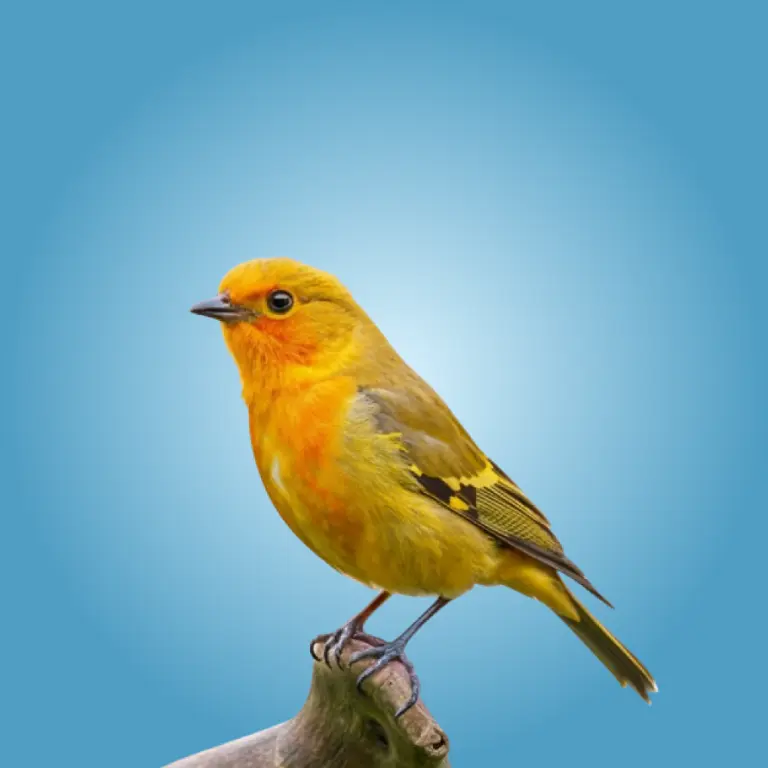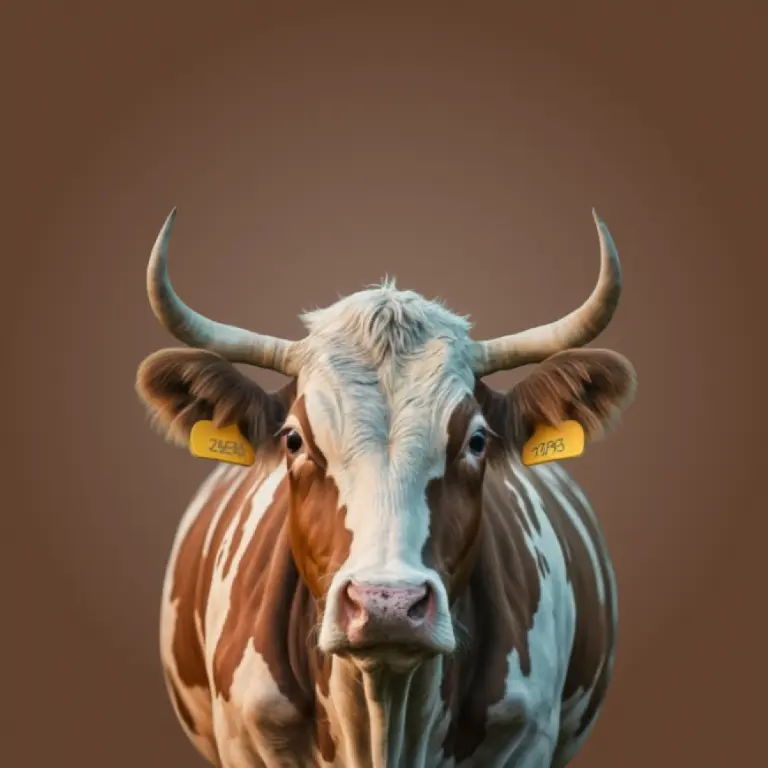Handling a cow might seem a little overwhelming at first. Cows are large, strong animals, but don’t let their size intimidate you. With patience, respect, and the right approach, you can confidently and safely work with cows. Whether you’re a beginner or someone looking for a refresher, I’ve put together this guide to make your experience smoother and more enjoyable. Cows are gentle creatures at heart, and building trust with them can be an incredibly rewarding experience. Lets learn how to handle a cow.
1. Approach the Cow with Caution and Calmness
Cows are prey animals by nature, and sudden movements or loud noises can easily spook them. I remember feeling a bit nervous when I first started working with cows, but I quickly learned that how you approach them makes all the difference.
Move slowly and calmly
Cows are generally calm creatures, but they can get anxious if you approach too quickly or loudly. Keep your movements slow and steady to avoid startling them.
Approach from the side
Cows have a wide field of vision, but they have blind spots directly in front of and behind them. Approaching from the side allows the cow to see you coming, which helps prevent any surprise reactions.
Make soft, gentle sounds
Speaking softly to a cow as you approach can help them stay calm. I’ve found that a gentle “Hey, girl” or a soft whistle reassures the cow that you’re not a threat.
Cows are curious animals, and if you approach them calmly, they’re likely to be more open to interaction. In fact, some cows might even approach you first if they feel comfortable.
2. Gain the Cow’s Trust Through Positive Interaction
Just like with other animals, building trust with a cow is essential. This doesn’t happen overnight, but with consistent, positive interactions, you’ll create a strong bond that makes handling much easier.
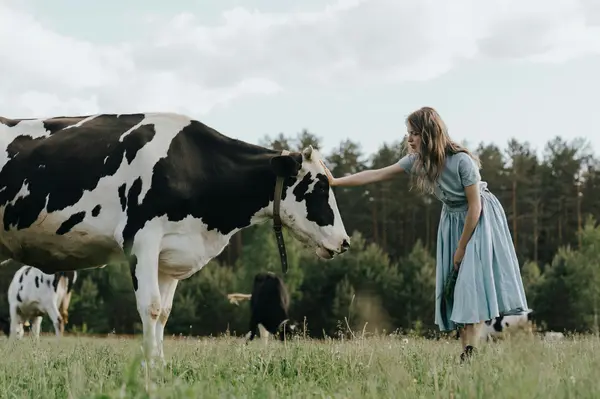
Give them space
Respect is key. While cows are generally docile, they do appreciate having their space. Avoid rushing into their personal bubble too quickly. Let the cow come to you when they’re ready.
Scratch their favorite spots
Believe it or not, cows enjoy a good scratch just like dogs or cats. Many cows love being scratched around their neck, shoulders, or back. I’ve had cows come right up to me just for a scratch, and it’s a great way to build a bond with them.
Offer treats, but sparingly
A small treat can be a great way to encourage positive behavior. Cows love things like apples or carrots, but just be sure not to overdo it. Too many treats can lead to cows expecting food every time they see you, which can create some pushy behavior.
3. Use Proper Equipment for Handling
When it comes to handling a cow, using the right equipment is essential for both safety and control. Cows are strong animals, and having the right tools can make the process much smoother.
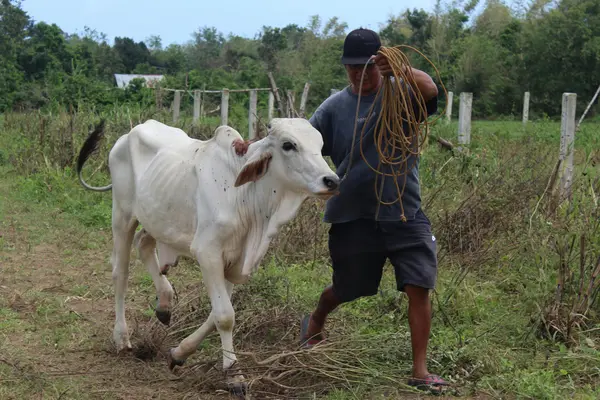
Halter and lead rope
If you’re planning to lead or tie up a cow, a halter is the go-to piece of equipment. A properly fitted halter gives you control without causing discomfort to the cow. Make sure it’s snug but not too tight—just enough to prevent the cow from slipping out of it, so it’s easier to handle a cow this way.
Gates and fences
If you need to move a cow from one area to another, having well-maintained gates and fences in place is important. Cows are big and strong, and they can easily push through weak barriers if they feel like it. Always ensure gates are securely latched.
Chutes for medical or close-up care
If you need to handle a cow for health reasons—like vaccinations or hoof care—a handling chute can help. It safely restrains the cow so you can work without risk of injury to you or the animal.
When I first started working with cows, I underestimated how important good equipment was. Having a proper halter and lead made a huge difference in my ability to confidently handle them, and it’s something I always recommend to beginners.
4. Lead with Confidence, Not Force
Cows are sensitive to your behavior. If you approach them with confidence and calmness, they’re more likely to cooperate. But it’s important to remember that cows won’t respond well to force or aggression.
Walk alongside them, not ahead
When leading a cow, it’s best to position yourself next to their shoulder, keeping a firm but gentle hold on the lead rope. Walking alongside helps guide them naturally, rather than pulling or pushing, which can make them resist.
Use clear, consistent commands
Cows, believe it or not, can learn commands like “come,” “stop,” or “back up.” I’ve found that being consistent with my voice and hand signals makes it easier for the cow to understand what I’m asking.
Be patient
Cows have their own pace, and sometimes they might need a moment to process what’s happening. If the cow is being stubborn or seems unsure, give them a moment rather than trying to force them to move. Patience goes a long way when handling a cow.
One of the most important lessons I’ve learned is that cows are more likely to follow your lead if they feel calm and unthreatened. A confident, gentle demeanor makes all the difference.
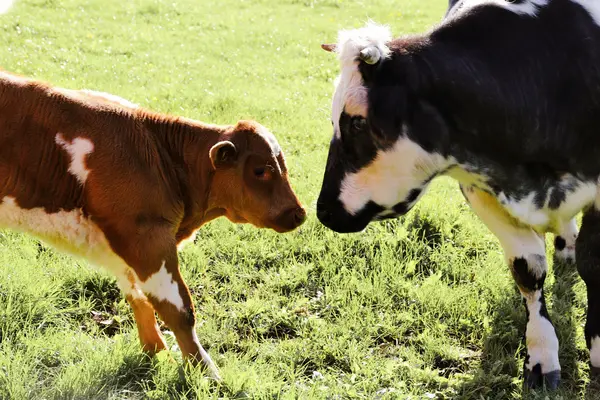
5. Understand Cow Behavior
Cows have unique behaviors, and understanding these can help you handle a cow more effectively and safely. While they are generally gentle, there are a few key behaviors to be aware of:
Watch for tail swishing and ear movements
Cows use their tails and ears to express themselves. A quick tail swish can be a sign of irritation, while pinned-back ears might indicate that they’re feeling defensive. Paying attention to these signals can help you avoid upsetting the cow.
Give them space when eating or resting
Cows can become protective of their food or personal space, especially when resting. Avoid approaching them suddenly during these times, as it might cause them to become defensive.
Be mindful of maternal instincts
If a cow has a calf, she may become more protective and cautious. Always approach cows with calves slowly and with extra care, as the mother may see you as a threat if you get too close to her baby.
I’ve had moments where I didn’t quite catch these signals right away, and it resulted in a cow getting a bit agitated. But the more time you spend observing and interacting with cows, the easier it becomes to read their body language.
6. Handling the Cow in a Herd
If you’re handling a cow in a herd setting, there are a few extra things to keep in mind. Cows are social animals, and their behavior often depends on the dynamics within the herd.
Move slowly when in a herd
When you need to handle or move a cow within a herd, do so slowly and calmly. If you move too quickly, you might spook the entire group, which can lead to chaos.
Focus on the lead cow
In many herds, there’s often a dominant cow, or “lead cow,” that the others follow. If you can handle or guide the lead cow, the others are likely to follow along.
Be cautious around bulls
If there’s a bull in the herd, be extra cautious. Bulls can be more territorial and aggressive than cows, so it’s important to give them plenty of space and avoid direct confrontation.
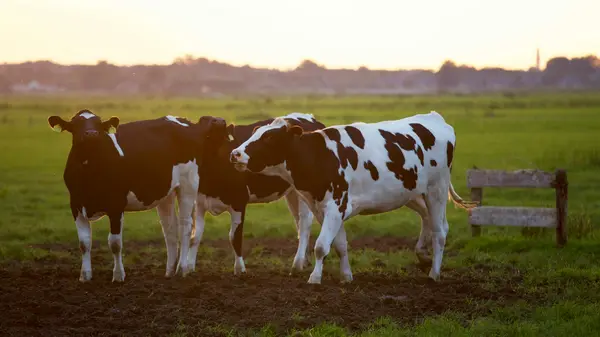
7. End the Session on a Positive Note
Just like with other animals, it’s important to end your time with a cow on a positive note. This leaves a lasting good impression and helps the cow feel comfortable during your next interaction.
Offer a gentle pat or scratch
After handling or leading a cow, I always like to give them a little scratch on their favorite spot. Whether it’s behind the ears or along their back, this small act of kindness shows the cow that they’ve done well.
Let them relax
After working with a cow, let them return to their normal routine, whether it’s grazing, resting, or joining the herd. Giving them space to unwind after handling is just as important as the handling itself.
Final Thoughts
Cows are gentle, social creatures that respond well to a calm, confident handler. The more time you spend with them, the better you’ll get at reading their body language and understanding their needs.
Whether you’re working with cows for the first time or looking to improve your skills, I hope this guide helps you feel more confident and prepared. Remember, every cow has its own personality, so take the time to get to know them, and enjoy the rewarding bond that comes with handling these wonderful animals.



